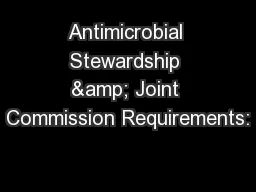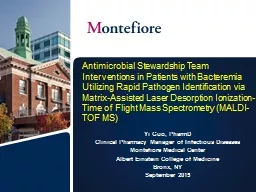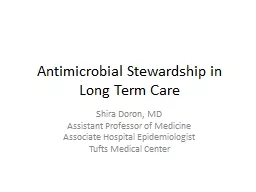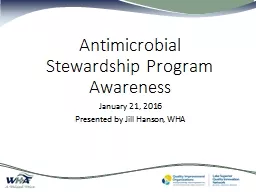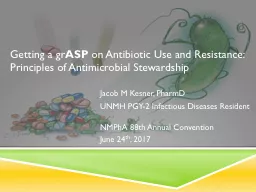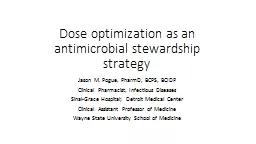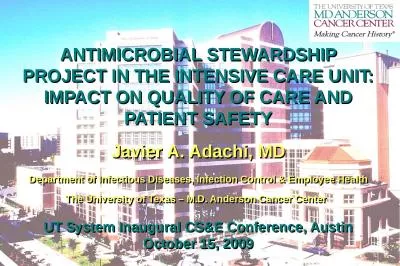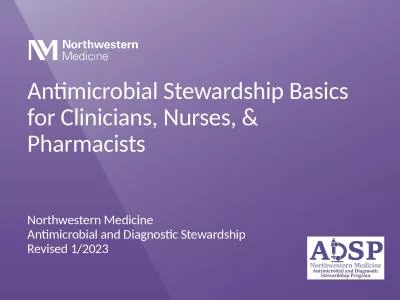PPT-Antimicrobial Stewardship & Joint Commission Requirements:
Author : aaron | Published Date : 2018-12-12
An Opportunity for Pharmacy Leadership Holly Maples PharmD Associate Professor Dept of Pharmacy Practiced Jeff amp Kathy Lewis Sanders Endowed Chair in Pediatrics
Presentation Embed Code
Download Presentation
Download Presentation The PPT/PDF document "Antimicrobial Stewardship & Joint Co..." is the property of its rightful owner. Permission is granted to download and print the materials on this website for personal, non-commercial use only, and to display it on your personal computer provided you do not modify the materials and that you retain all copyright notices contained in the materials. By downloading content from our website, you accept the terms of this agreement.
Antimicrobial Stewardship & Joint Commission Requirements:: Transcript
Download Rules Of Document
"Antimicrobial Stewardship & Joint Commission Requirements:"The content belongs to its owner. You may download and print it for personal use, without modification, and keep all copyright notices. By downloading, you agree to these terms.
Related Documents

